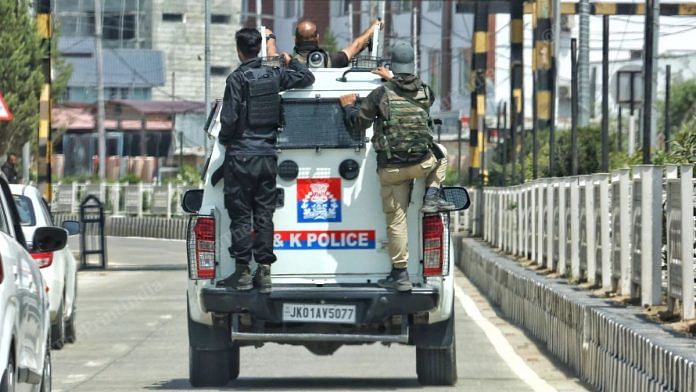“The forces had to literally run the rest of the way. It took them nearly an hour to reach the site.”
By the time security forces reached the spot, the terrorists had already fled, bodies lay strewn across the ground, and many pony riders were seen trying to help rescue tourists, sources confirmed. 26 people were killed in the attack.
There was no immediate security in the area despite Baisaran Valley being a key tourist destination and prior intelligence inputs indicating terrorist movement in the area, the sources further said.
Among the first responders were the district superintendent of police (SSP), his team, and personnel from the CRPF.
The meadow, about 200m wide and nearly 800m long, is surrounded by dense forests, and there were over 200 tourists present at the time of the attack.
“Terrorists were just one leap away from disappearing into unknown territory. It’s a thick forest. Soon after the rampage, they fled into the woods and managed to escape,” an officer said on condition of anonymity.
‘Sufficient intel inputs, but lack of adequate security’
Critical response time was lost due to the lack of adequate security around the popular tourist destination, where hundreds of visitors ride horseback to the meadow daily, despite the area being on high alert because of the visit by US Vice-President J.D. Vance and prior intelligence inputs warning of possible terrorist activity.
Asked why security had not been strengthened at such a heavily frequented location, a source in the security establishment admitted that the area has traditionally seen minimal deployment, with heightened security typically limited to the Amarnath Yatra period.
The source acknowledged that, given the high alert, more personnel should have been deployed for “area domination”.
“There were sufficient inputs regarding terrorist movement in the area, including the possibility of an attack on tourists,” a second source said. “The intelligence suggested that popular tourist spots could be targeted. However, this particular area has remained a low-domination zone with minimal deployment.”
The source added, “In-depth domination is the responsibility of ancillary forces like the CRPF. Still, considering the heightened alert and prior warnings, security should have been reinforced.”
Another source noted that standard operating procedures (SOPs) for area domination are well-drafted and distributed to all relevant personnel. “There is security presence in the region—it’s just unfortunate that the site of yesterday’s incident was one of the less dominated areas.”
(Edited by Sanya Mathur)
Also Read: Pattern of terror in J&K amid high-profile US visits—Chittisinghpura, Kaluchak & now Pahalgam
var ytflag = 0;
var myListener = function() {
document.removeEventListener(‘mousemove’, myListener, false);
lazyloadmyframes();
};
document.addEventListener(‘mousemove’, myListener, false);
window.addEventListener(‘scroll’, function() {
if (ytflag == 0) {
lazyloadmyframes();
ytflag = 1;
}
});
function lazyloadmyframes() {
var ytv = document.getElementsByClassName(“klazyiframe”);
for (var i = 0; i < ytv.length; i++) {
ytv[i].src = ytv[i].getAttribute('data-src');
}
}








